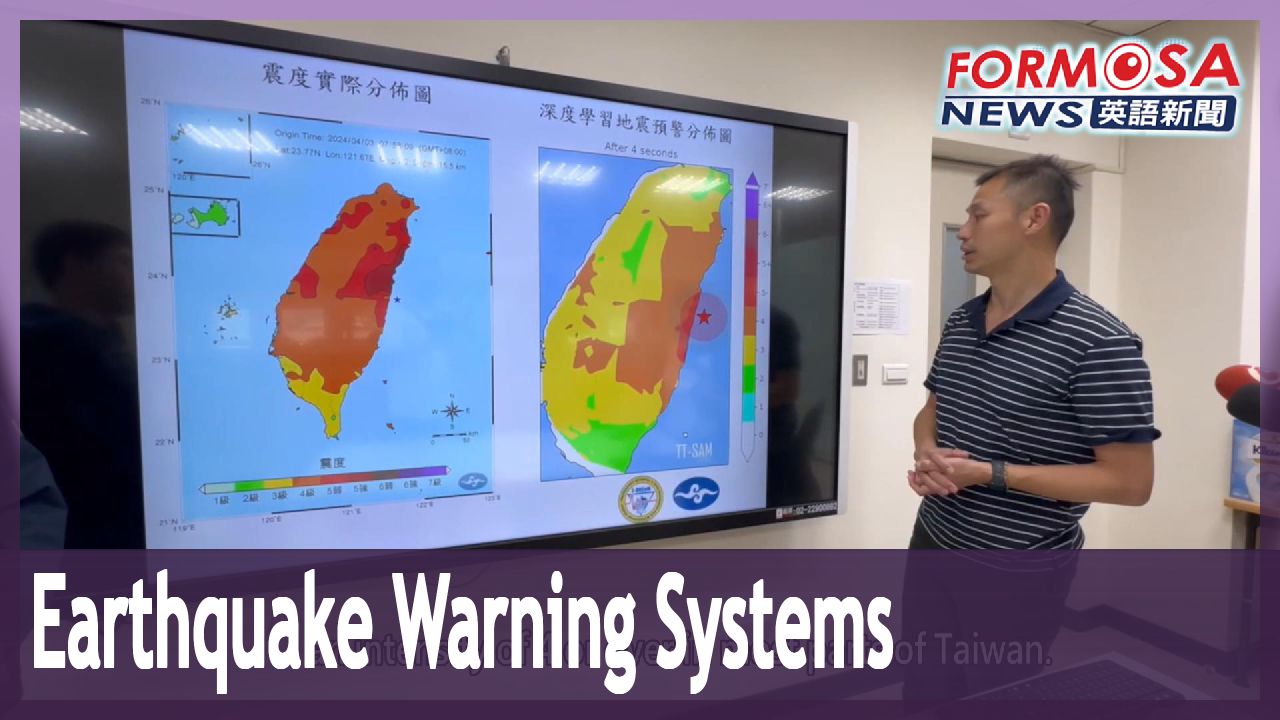
With earthquakes such a frequent occurrence in Taiwan, effective earthquake response systems are a big industry. A new AI earthquake early warning system is in development, which promises to provide more accurate predictions for quake magnitude. The new system has been developed at National Central University. The deputy head of its Earthquake Disaster and Risk Evaluation and Management Center, Chan Chung-han, explains how the new system could be used to reduce risks and casualties.
Chan Chung-han
Earthquake Disaster and Risk Evaluation and Management Center
We’re looking at the Hualien region during the recent earthquake. The 32 represents the Milun Fault. The 22 represents the Huadong Longitudinal Fault. We all know that it has a higher probability of earthquake occurrence in the future.
National Central University has a two-year project, funded by the Central Weather Administration, to create a next-generation AI earthquake early warning system, TT-SAM. Its aim is to win citizens a bit more time to prepare for an earthquake, and thereby reduce casualties. It will be able to pick up on tremors faster, and provide intensity predictions for each county with at least 90% accuracy. Developers hope it will be used eventually in the official earthquake warning system.
Chan Chung-han
Earthquake Disaster and Risk Evaluation and Management Center
When our station has picked it up, within about six seconds we’ll be able to assess which places are facing tremors of an intensity of 4 or more, for almost everywhere in Taiwan. Then we can use this method to issue warnings for most places.
The system uses artificial intelligence to monitor earthquake imagery, drawing on AI quake data training models built in Japan and Italy. It takes into account the ways that tremors are magnified in certain places in Taiwan, to optimize predictions. The system could predict that the recent quake of magnitude 7.2 in Hualien would have an intensity of 4 or over in most parts of Taiwan. Apart from making such predictions more accurate, the system will also issue its analyses faster than traditional warning systems.
Chan Chung-han
Earthquake Disaster and Risk Evaluation and Management Center
In terms of the needs of official institutions, I am confident they will be able to send information to people who need it. In six seconds, they can’t make a high-speed train slow down from 200 kilometers an hour to zero. But they can effectively reduce the speed, and maybe avoid some potential dangers.
Taiwan is in a high-frequency earthquake region. With advanced warning systems, response times are in the seconds, and every second can make a big difference in improving outcomes.
For more Taiwan news, tune in:
Sun to Fri at 9:30 pm on Channel 152
Tue to Sat at 1 am on Channel 53
資料來源:https://english.ftvnews.com.tw/news/2024411W04EA








